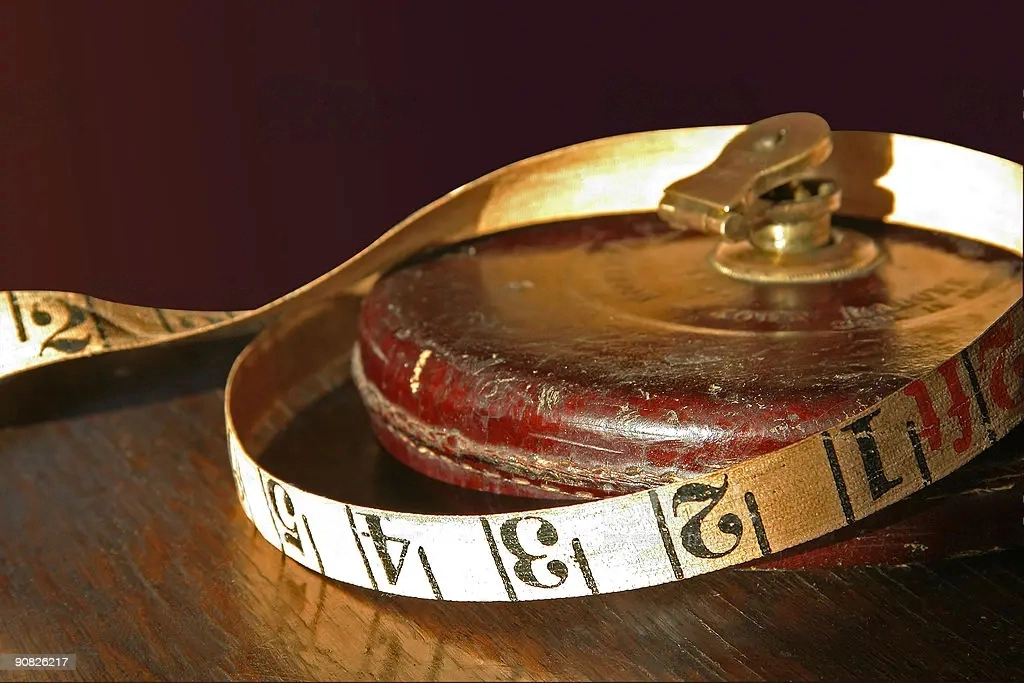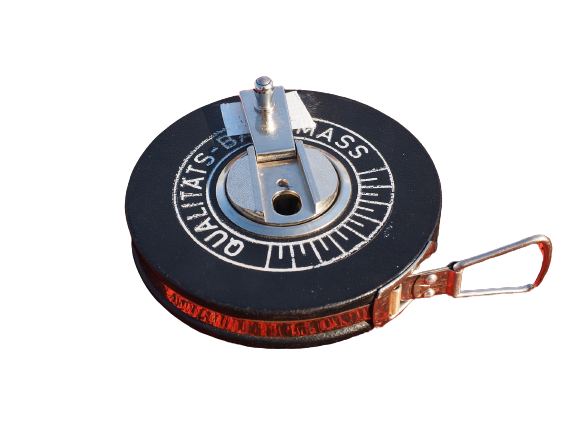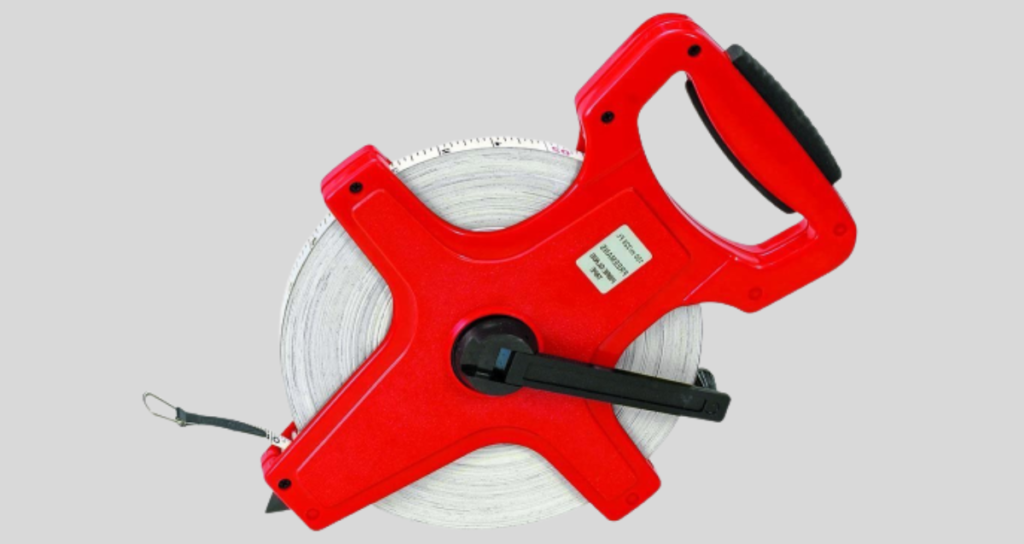A measuring tape is a tool used to measure the dimensions or distances between two points accurately and precisely. The distance between the two points may be horizontal, vertical, or sloped. Tapes are available in different units such as meters, feet, and inches. These are classified into various types, each tape has its specific purpose. If you want to know all the types of measuring tapes used in surveying field work, then this blog post is for you.
CLOTH OR LINEN TAPE

These tapes made up of tightly woven linen are called Cloth or Linen tape. They are light, flexible, and used in the field for the measurement of less precise works. The width of the strip is 12-15mm, coated to keep it free from moisture. A little brass ring is attached at the starting point of the tape which itself is the part of the measured length. These are compact and easy to carry.
Length Availability
It is available in lengths of 10 meters (33 ft), 20 meters (66 ft), 25 meters (82 ft), and 30 meters (100 ft).
Advantages
- Better for measurement when other options are not available.
- Suitable for rough and less accurate measurements.
- For short distances, it gives better results.
Disadvantages
- Not used for more accurate measurements.
- Easily shrinks by moisture or dampness.
- On stretching its length gets changed.
- Liable to twist and tangle.
WOVEN METALLIC TAPE

Metallic tape does not stretch as readily as cloth tape. It is formed of a varnished strip of water-resistant linen woven with tiny brass, copper, or bronze wires. They are light, flexible, and difficult to break. For tapes that are 10, 20, 30, and 50 meters in length, the outer ends are joined to a metal ring by a metal strip that has the same width as the tape. The tape width is shielded by the leather or plastic material from the outer end to a length of about 20 cm.
Length Availability
They are available in lengths of 2, 5, 10, 20, 30 and 50 meters.
Advantages
- Better for measuring long distances.
- Highly accurate results than cloth tape.
Disadvantages
- They are relatively heavy.
- They may expand or contract due to temperature variations.
NON-METALLIC or FIBERGLASS TAPE

These tapes are made up of glass fibers coated with PVC. It can easily withstand moisture and electricity. This tape is widely used by Engineers and Surveyors. The width of the strip is 12mm and a metal ring is fitted at the outer end. The graduations are clearly and smoothly marked on its meters on one side and feet and inches on another side. They are commonly used in the regions of magnetic fields and power lines, where metallic tapes cannot be used.
Length Availability
They are available in lengths of 2, 5, 10, 20, 30, and 50 meters.
Advantages
- It is safer to use in high-tensioned line areas.
- It can be used in wet areas.
- It is highly resistant to tear and stretching.
Disadvantages
- During the high temperature, it expands.
- Accuracy is slightly below than metal tape.
STEEL TAPE
Steel tapes are made of stainless steel. They are not enough flexible and are used to measure more precise and accurate measurements. The strip width of the tape is 6-10 mm. The graduations are accurately marked in mm, cm, and m. Steel tape comes in the proper casing of leather or other plastic material with a suitable winding device. A metal ring is also attached to the outer end of the tape whose length is included in the total length of the tape. It is easy to carry but cannot withstand rough handling. It has more chances of corrosion when exposed to moisture conditions. It is mostly used in the field measurements of construction work.
Length Availability
They are available in lengths of 2, 5, 10, 20, 30, and 50 meters.
Advantages
- It is safer to use in high-tensioned line areas.
- It can be used in wet areas.
- It is highly resistant to tears and stretching.
Disadvantages
- During the high temperature, it expands.
- Accuracy is slightly below than metal tape.
INVAR TAPE
This tape is made of an alloy called Invar. It has 36% nickel and 34% steel and has a low coefficient of thermal expansion. These are only 6mm wide. These are used to take highly accurate measurements. Invar tapes are highly resistant to temperature changes, ensuring low expansion or contraction during measurements. It is necessary to determine its length and coefficient of thermal expansion from time to time. These tapes are highly expensive and require careful handling and storage.
Length Availability
It is available in lengths of 20, 30, and 100 meters.
Advantages
- It gives more accurate results in high-precision surveys, geodetic measurements, and other applications that require high accuracy.
Disadvantages
- They get easily bent and damaged.
- It undergoes creep over a period of time.
CONCLUSION
Measuring tapes are commonly used tools in various fields, and selecting the right type can significantly impact the accuracy of your measurements. Cloth or linen tapes are suitable for basic measurements, while metallic and non-metallic tapes are commonly used in surveying. Steel tapes provide greater precision, but Invar tapes take precision to the next level. As you start your measuring journey, choose the type of measuring tape that works best for you.
FAQS
Can I use a cloth tape for surveying?
While cloth tapes can be used for rough measurements in surveying, they are not recommended for tasks requiring high precision.
Which tape is best for land surveying?
For land surveying, steel tapes are commonly used due to their high accuracy and durability.
Are non-metallic tapes as accurate as metallic tapes?
Non-metallic tapes can be highly accurate and offer advantages like resistance to temperature effects, making them suitable for certain surveying tasks.
What makes Invar tapes special?
Invar tapes have an extremely low thermal expansion, making them ideal for precise geodetic surveys where temperature variations affect measurements.
How do I maintain the accuracy of my measuring tape?
Regularly calibrate the measuring tape, store it properly to avoid damage, and handle it carefully.
Also read: Auto Level Parts | Step-by-Step Guide for Beginners|
Also Check:







